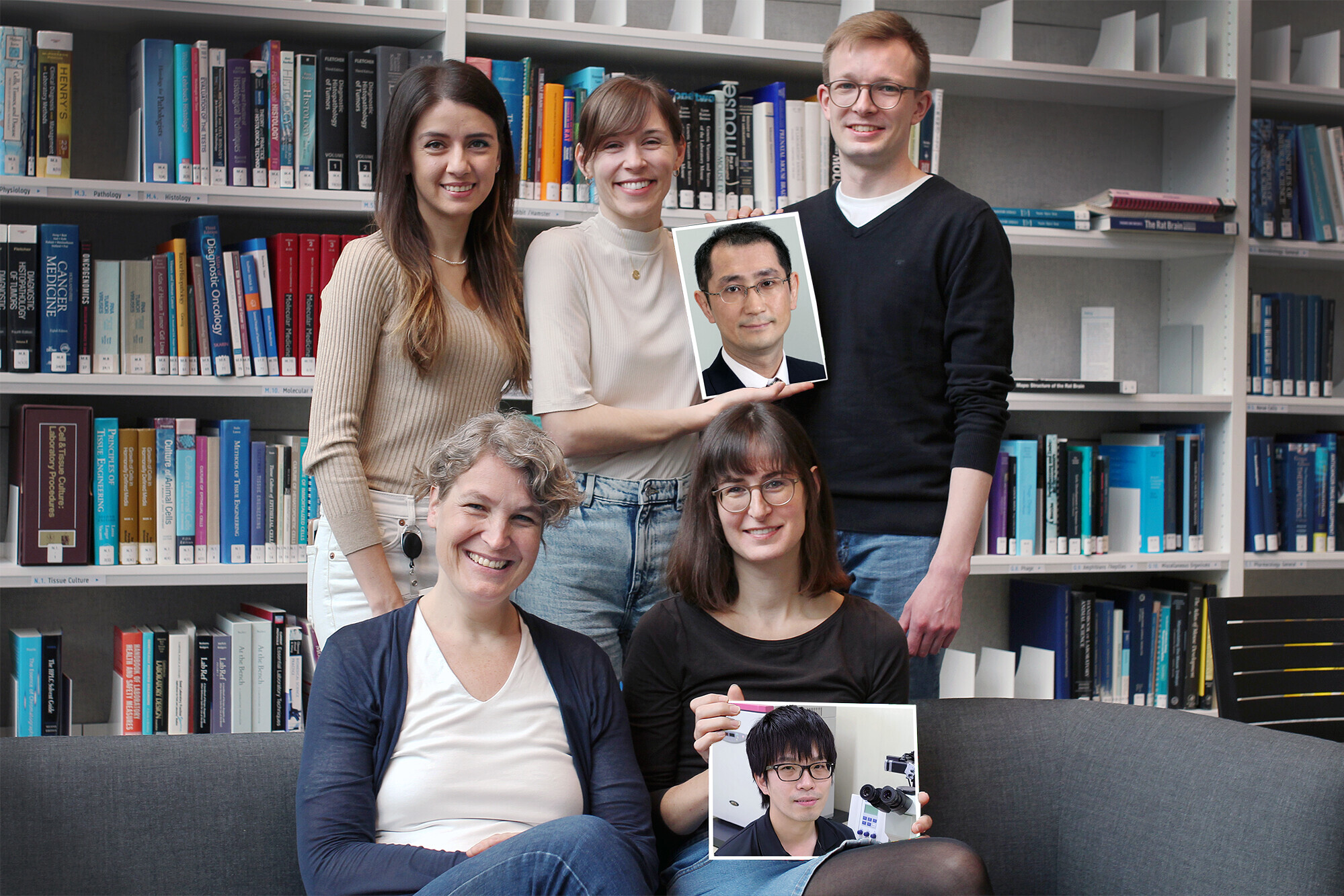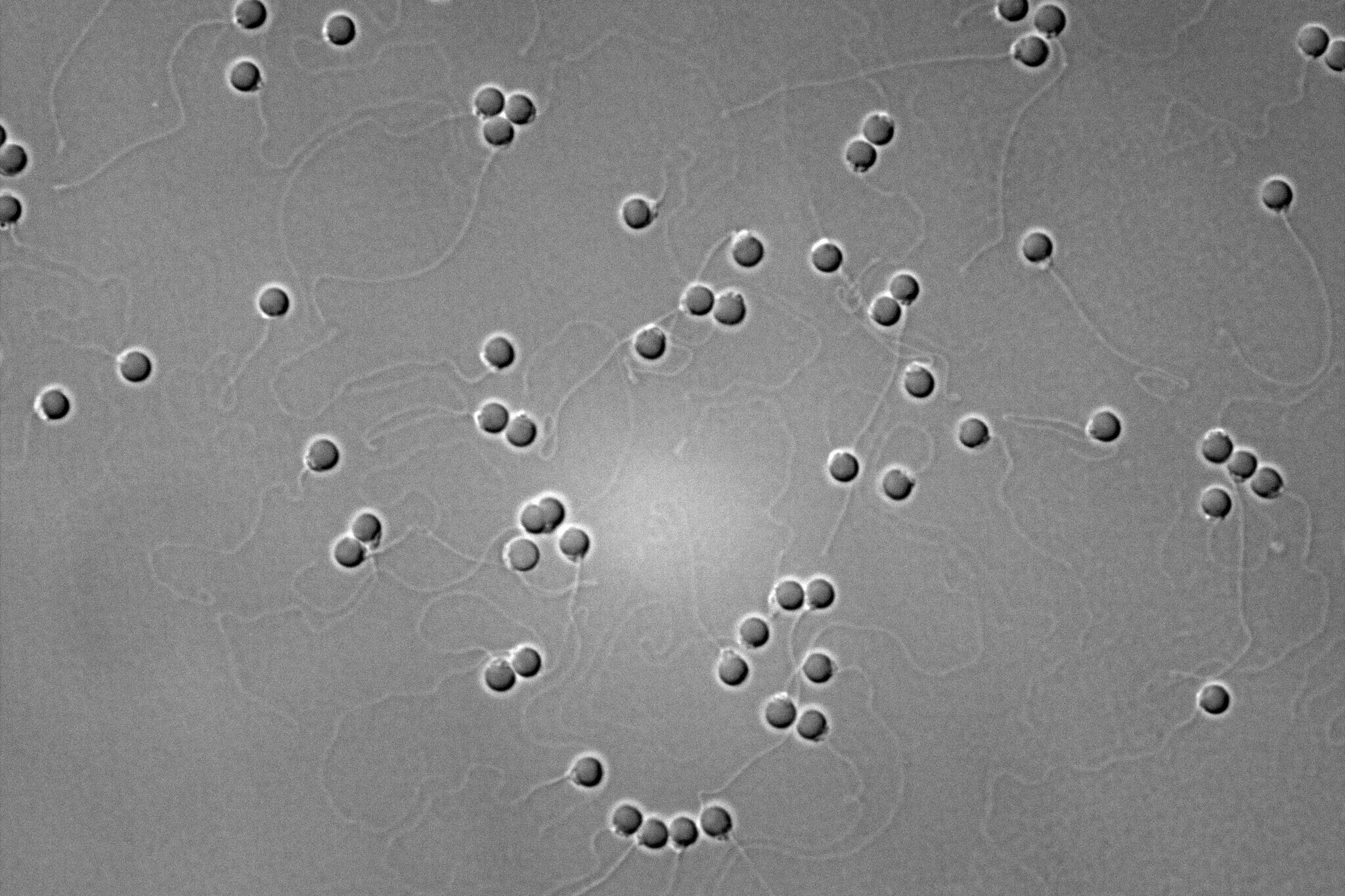Scientists discover essential role of two proteins for fertilisation
In an international collaboration between the labs of Andrea Pauli at the IMP and Masahito Ikawa at Osaka University, scientists show that the sperm proteins DCST1 and DCST2 are necessary for sperm to fertilise the egg in mice and in zebrafish.
Andreas Blaha, PhD student in the lab of Andrea Pauli and a contributor to the study, tells us more about these findings, now published in Communications Biology.
Andreas, you have been the organising mind behind this collaborative work. How did this project begin?
Scientists in our lab try to understand the process of fertilisation at the molecular level. In vertebrates, we’re still lacking a lot of information. Which set of molecules is necessary for fertilisation? What do they do to make the process work? To tackle these questions, we looked into invertebrate animals that have been researched more extensively – worms and flies – and identified genes that have been found to be crucial for fertilisation there.
Worms, flies, fish, and mammals have kept these genes in the course of evolution. And so, we wanted to know whether they play a similar role for sperm biology across the animal kingdom. While our collaborators in Japan focused on the mammalian side of the study, our group addressed the question in zebrafish. This work was a real group effort – several people in our lab and our collaborators in Osaka were instrumental for the study’s success.

What did you do to determine the roles of DCST1 and DCST2?
We removed the genes that encode DCST1 and DCST2 in mice and fish and observed the resulting defects in fertilisation. This showed us that the role of these proteins differs between mice and fish. In zebrafish, DCST1 and DCST2 are needed for sperm-egg binding, while in mice, they are required for the fusion process after the membranes of sperm and egg have come into contact. In both species, males that lack DCST1 and DCST2 are sterile.

Your PhD project is related to those findings. Where are you taking your project next?
We really want to understand how these proteins work. For my PhD project, I will dissect the cellular processes that are controlled by DCST1 and DCST2. We are testing whether the exposed parts of these proteins can sense the egg membrane and transmit that signal into the sperm cell. So, in short, the next steps will be to pinpoint what these proteins do at the molecular level.
There is a lot more to discover in the field of fertilisation. What made it so appealing to you in the first place?
Fertilisation is such a basic, fundamental process and practically everybody knows about it from school. If there’s one cellular process that anyone can visualise, it’s fertilisation: these two highly specialised cells that look like no other cell in the body, coming together to start the life of an embryo. I was surprised to see how little we know about the molecular pathways that drive fertilisation, and I wanted to be part of the team that digs deeper into it.
Original publication
Taichi Noda, Andreas Blaha, Yoshitaka Fujihara, Krista R. Gert, Chihiro Emori, Victoria E. Deneke, Seiya Oura, Sara Berent, Mayo Kodani, Karin Panser, Luis Enrique Cabrera-Quio, Andrea Pauli, Masahito Ikawa: “Sperm membrane proteins DCST1 and DCST2 are required for the sperm-egg fusion process in mice and fish”. Communications Biology (2022). DOI: 10.1038/s42003-022-03289-w.
Further reading
IMP students characterise a sperm protein essential for zebrafish fertilisation
Mouse sperm need a molecular VIP pass to reach the egg membrane
